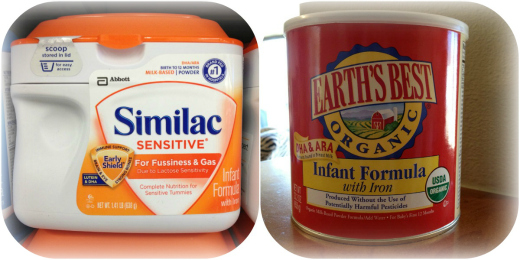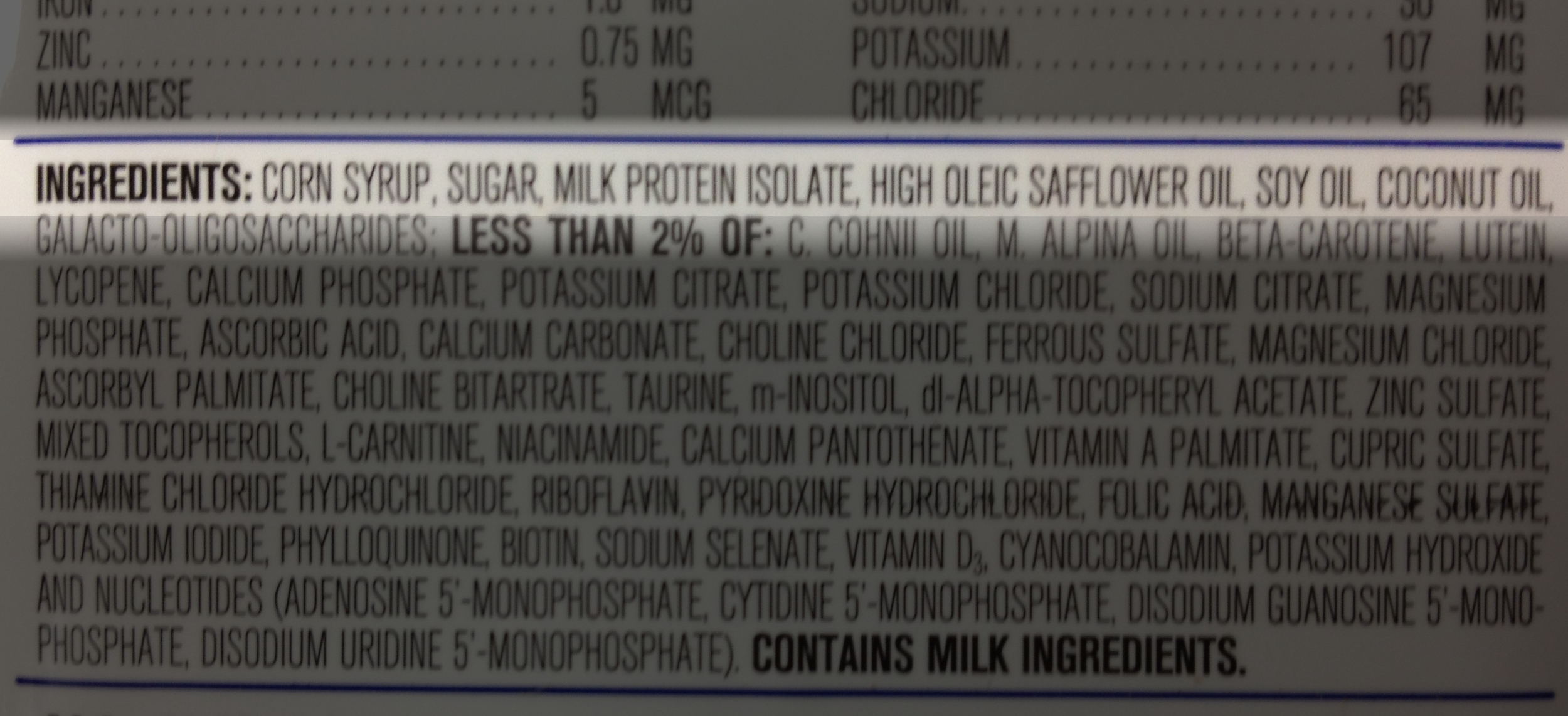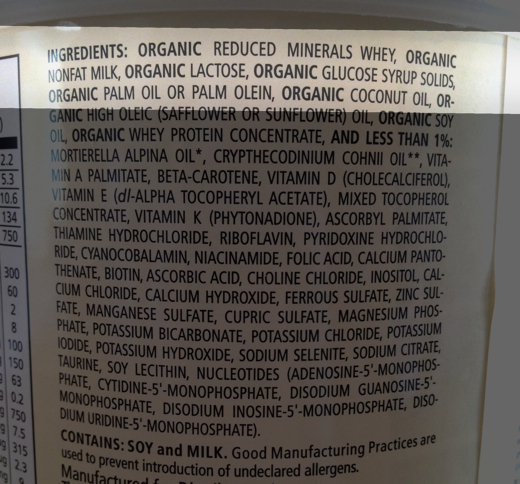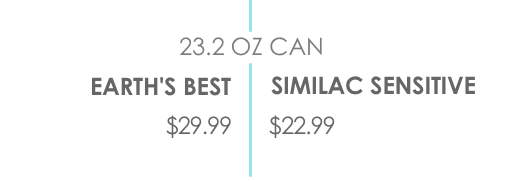What Ingredients Are in Infant Formula?
We are NOT nutritionists; in fact, we are very far from it. We've only recently started to make a conscious effort to make better food choices. So, when we started taking Rooney to the chiropractor/wellness coach for her neck issues, we were very surprised at his recommendation to switch formulas. Because breastfeeding didn't work out, we opted to feed Rooney Similac Sensitive as the "next best thing." Rooney seemed to spit up more with Similac Advance, but did fine with the sensitive, so we continued with that for a couple months and then switched to Target's Up and Up sensitive formula to save money. Dr. Tyler's recommendation was to switch to Earth's Best organic formula. We (OK, Kelsey) began to research the Similac formula ingredients vs. other brands.
Here's What We Found:
Similac Sensitive Formula Ingredients
I'm not going to go through the laundry list of ingredients in each of the powder formulas, but let's just take the top two from each for example:
It caught us by surprise that Similac's No. 1 and 2 ingredients are corn syrup and sugar respectively. Kelsey read somewhere that corn syrup actually makes up 42.6% per serving. That is appalling! No wonder our baby was sleeping through the night at three months. She was chalked full of corn syrup, one of the most processed and hardest things to digest. Similac says this is the "#1 formula for sensitive tummies."
On the other hand, Earth's Best Organic Formula's No. 1 and 2 ingredients are both organic: reduced minerals whey and nonfat milk. It is supposedly as close to breast milk as you can find on the market.
Earth's Best Organic Formula Ingredients (This is NOT their sensitive formula)
Pricing and Availability
We decided that we had to make the switch, so we had to figure out where we could purchase Earth's Best formula in the Des Moines area. At the time, we couldn't find it at Target stores, but they did have it at Babies 'R' Us, and Target carries it online.
Online was the bonus for us. We have a Target debit card that gives us 5% off and free shipping. Even still, feeding your baby organic formula will burn a hole in your pocket quickly.
(Similac can be even cheaper with the $5 off coupons they mail us regularly.)
But Target offers a four-pack of Earth's Best for $102.99, bringing the price down to $25.75/can. With our 5% discount, it comes to $24.46/can. We can live with this. (If you don't have a Target debit card, it is cheaper to buy on Amazon: $100.46 for four cans, or $25.12/can.)
NOTE: Two stores have opened in our area recently that carry Earth's Best formula: Buy Buy Baby and Whole Foods. We still order from Target to buy in bulk for the savings.
Physical Affects
Going organic is wonderful overall and it gives us the peace of mind that we are feeding our baby the best that we can despite not being able to give her breast milk. But it did cause some physical affects to our baby that we have had to deal with during the transistion.
- Sleep: Because Similac was so hard to digest, it kept Rooney asleep longer. She would often sleep for 12 hours without making a single noise. I know babies grow and change and we can't say that the formula was the only reason she was sleeping, but as soon as we switched, she started waking up in the middle of the night. Maybe it was the 4-month sleep regression. Maybe it was a growth spurt. Still, it caused us to take note.
- Head size: Formula-fed babies tend to have bigger heads (because of the steroids). Because breast milk is so efficient, it only gives your baby exactly what it needs to grow. Formula filled our baby with a lot of things she didn't need and it caused her to plump up, especially in the head. I've noticed a subtle change since switching one month ago; her head is becoming more proportionate to her body.
- Eating schedule: Along with sleep, it took us awhile to get adjusted to her new eating schedule. Because it didn't fill her up as much, we had to give her more formula (8-10 oz instead of 6-8 oz), and she wouldn't last as long between feedings. It only took us a few weeks to figure it out though.
- Bowel movements: Yep, we're going there. Rooney's bowel movements were solid and formed after switching to Target's Up and Up formula. It got better once we added pear juice to her bottles, but we didn't like her having so much juice. Since switching, she has had more normal bowel movements (consistency like peanut butter).
The bummer of the whole situation is that most uninformed parents would never second guess the top brand of formula's ingredients (including us). They give you sample after sample in the hospital when breastfeeding isn't quite working out in order to get you hooked on their brand. And then somehow you get on their mailing list and they send you awesome coupons at the perfect time to keep you buying their brand.
Great marketing, but disappointing product when you look at the ingredients. It is also sad how expensive it is to feed our baby Earth's Best. Organic = expensive. But, when it comes to the growth and development of our baby, we want to offer her the best we can, and if that means squeezing the budget in other areas in order for her to have the best, then that's what we will do.
I think of it this way: It's only for one year, and then she will be done with formula. We are already five months in and she will be starting solid foods in the next few months, and the formula consumption should hopefully dwindle the closer we get to the one-year mark.
What kind of formula do you feed your baby? Was it a conscious decision?




